Historic Buildings
Since our opening in 1960, we have acquired additional structures and buildings to enhance the story of oil heritage at the Museum. Explore these buildings from our local history, such as the Oil Springs Train Station or the Langbank Post Office that was constructed in 1895!
Please note that our outbuildings are only open during our summer hours which run from May long weekend until October 31.
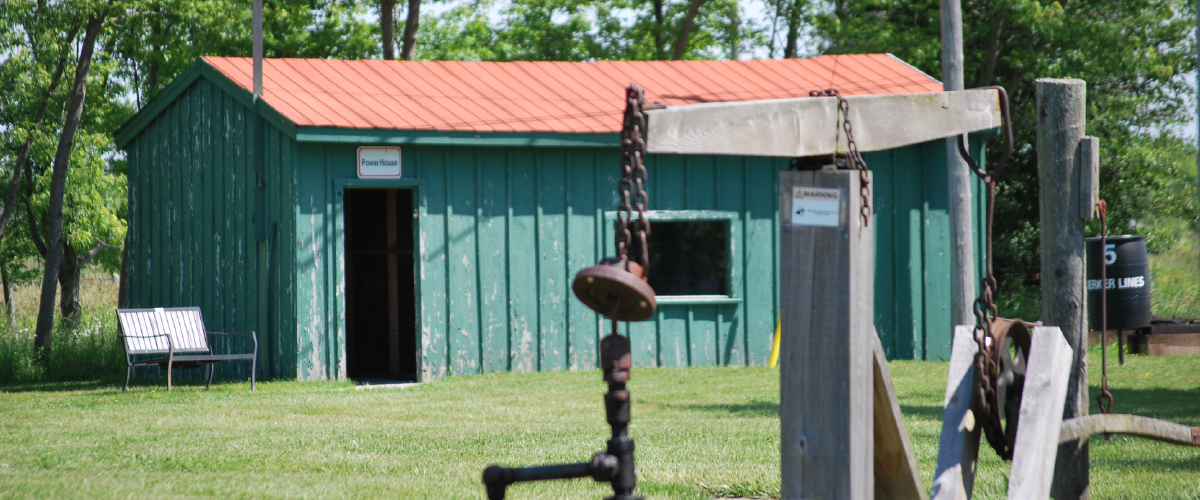
Chalmers Power House
The Chalmers Power House was originally located on Kelly Road and owned by Dr. J. P. Chalmers, a doctor in Oil Springs in the late 1800s early 1900s. Today this electric engine powers the field wheel and jerker line system animating our demonstration pump jacks. Three-pole derricks dot the grounds as they would have looked 150 years ago.
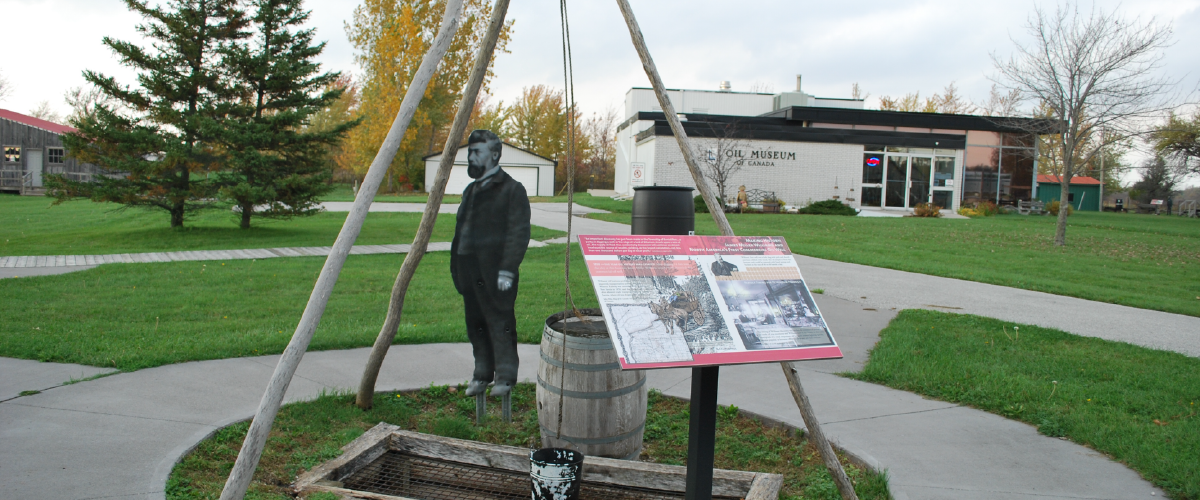
First Commercial Oil Well in North America
Excavated in 1958, the Williams' well was first dug in 1858. It's 14 feet deep, a shallow well. It was hand dug as the story goes to either discover how deep the bitumen went or he was digging a water well.
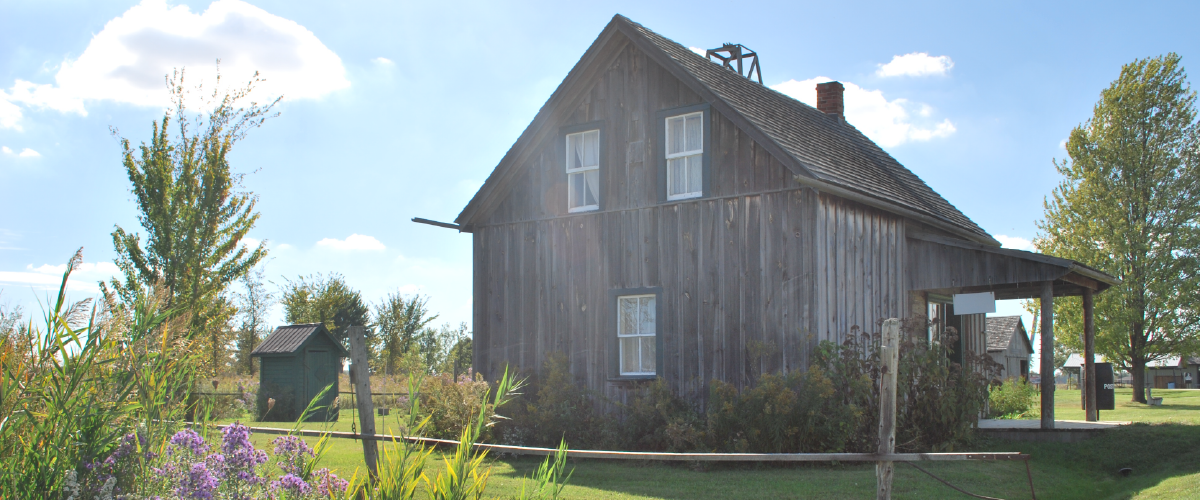
Langbank Log Cabin and Post Office
Langbank Log Cabin and Post Office was built in 1895 in Dawn Township for James C. Wood who was the township treasurer and first postmaster in Dawn Township. It is a traditional early settler log house construction. In his home, Wood established the post office to help with mail delivery for himself and his neighbours. Prior to this, residents of Dawn Township had a twenty-two mile trek to collect their mail. He named the post office, "Langbank" after the Scottish village where he had lived. Wood was Post Master until 1905 when Ida Morningstar took over the duty.
Original logs are visible at the front of the building and inside. It was brought to the Museum in 1975 and holds a heritage designation from the Village of Oil Springs.
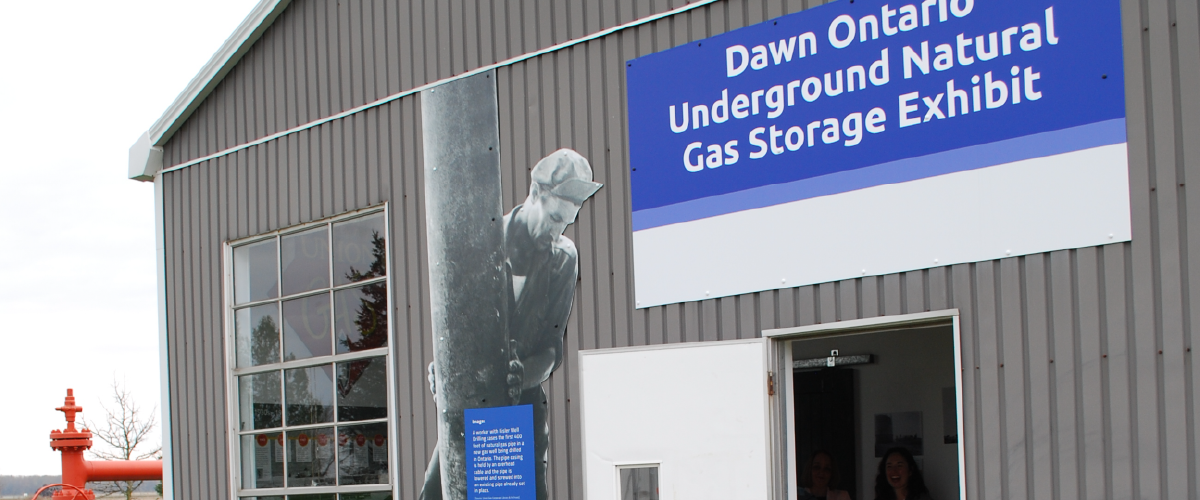
Dawn Ontario Underground Natural Gas Storage
The 1995 industrial style construction of the formerly known Oil and Gas building, was built around a 1942 Dawn Plant compressor donated to the Museum from Union Gas. In 2018 the exhibition was reinterpreted to the Dawn Ontario Underground Natural Gas Storage Exhibit in partnership with Union Gas (now Enbridge Gas Inc.).
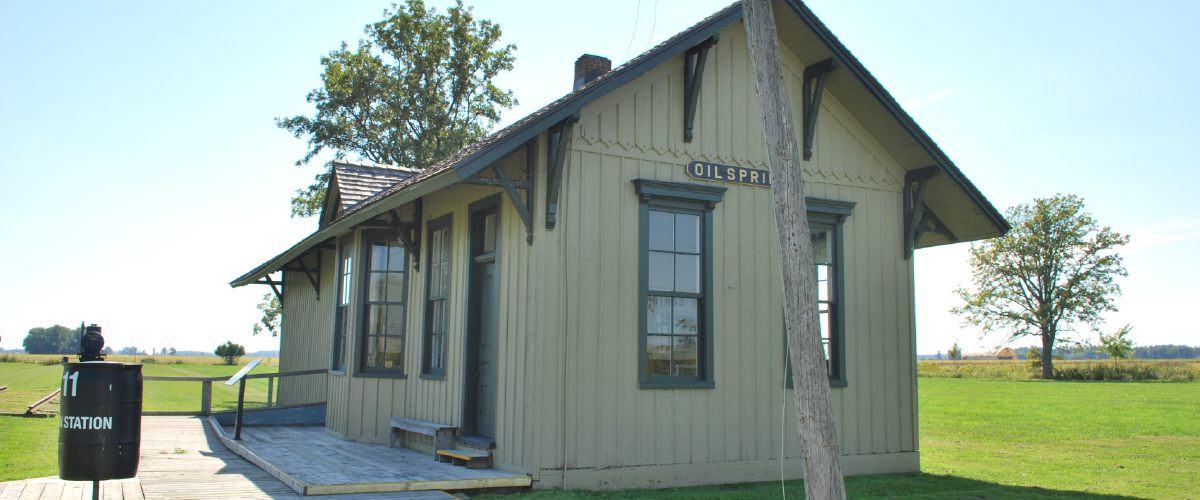
Oil Springs Railway Station and Procor Tank Car
This train station was originally located in the Village of Oil Springs, built in 1885 by the Southern Railroad. It was built for the purpose of providing the community with transportation for the oil business, as well as a cheaper and faster channel for travelling in and out of the village. The station was first located in the north end of the Museum property, behind the main museum building, but moved to its current home in 1980s to be placed in front of the original track-bed which marks the rail line. In 1986 the Museum acquired a 1918 tank car from Procor Limited which was used in bulk oil transport along the rail lines. This tank car was in use for 40 years.
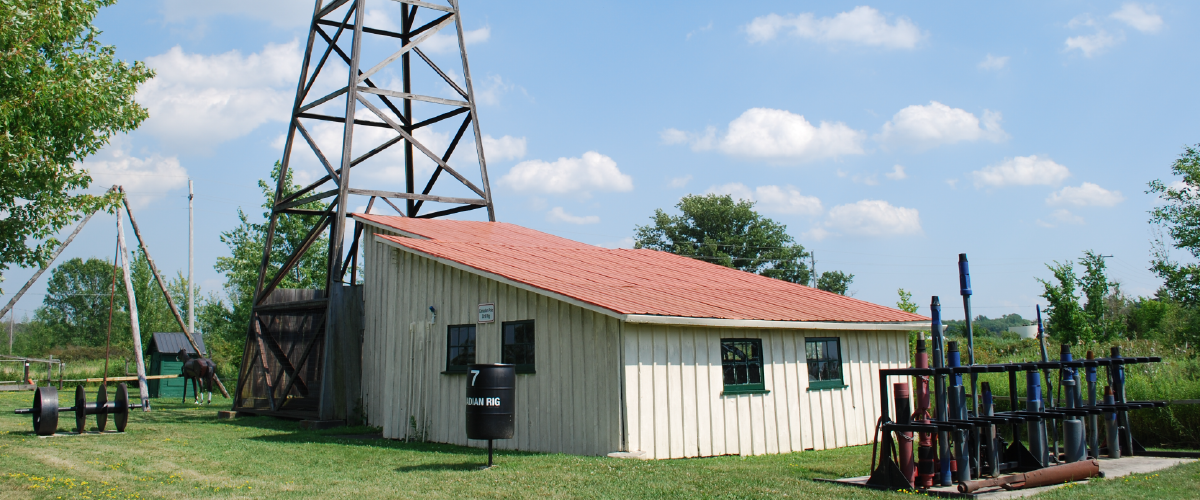
Canadian Pole Drilling Rig
Ernie Kells from Marthaville, originally owned this Canadian Rig on our grounds. The Canadian Pole Drilling Rig is one of only two original drill rigs to survive in the county. This type of structure became synonymous with Canada and Canadian drillers working overseas as it was commonly shipped abroad by Oil Well Supply Co. of Petrolia to be used in international oil fields. The boiler or engine found inside our Canadian Rig is by N. Peterson, Sarnia c. 1891 and one-of-a-kind to survive. This structure has been on site since 1962 with refurbishment to the 48-foot steel and wood clad derrick occurring in more recent times.
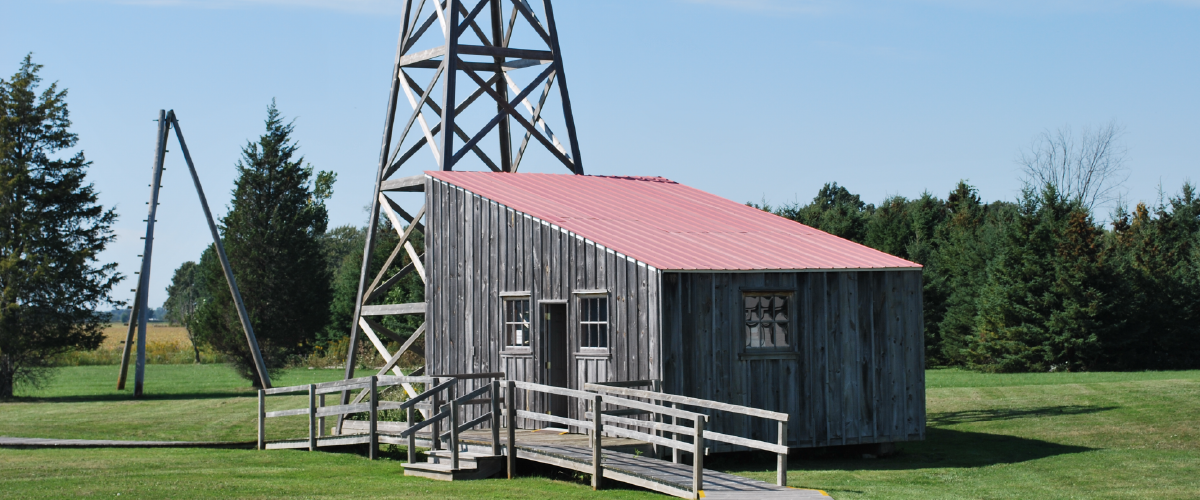
Tourist Information Centre exhibit building
The Tourist Information Centre was first located at the intersection of Oil Heritage Line and London Line known as Reeces Corner. The original concept for the building was to increase the public awareness of the location and importance of the Oil Heritage District in Lambton County. Built in 2000 as a replica Canadian Drilling Rig. It was moved to the Museum in 2003 by the efforts of the Oil Museum of Canada Foundation.

Blacksmith Shop
The Blacksmith Shop was donated to the Museum in 1979 having lived its life on a farm near Petrolia. On its arrival to the Museum, the forge was reconstructed in 1890s style using reclaimed bricks from the Presbyterian Church in Oil Springs. The bellow, anvil, and tools seen on display in the Blacksmith Shop were donated by several local oil producers and Oil Springs residents.

Wooden Tanks and Tank Wagons
The demonstration storage tanks and oil tank wagons dominate the north end of the Museum property. Prior to automobile use, horses were used to transport oil from day storage tanks, set into the ground, with oil tank wagons to the rail heads in Wyoming or Sarnia.

 Subscribe to this page
Subscribe to this page